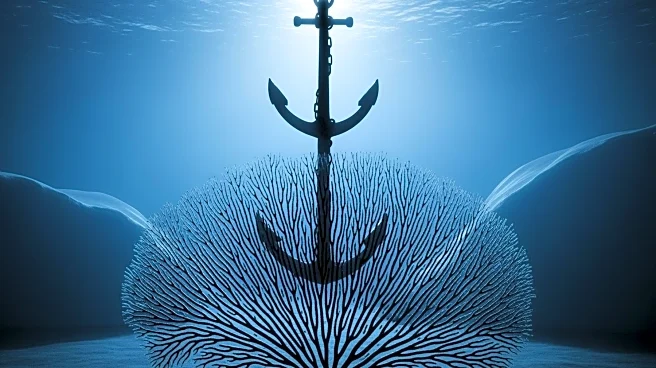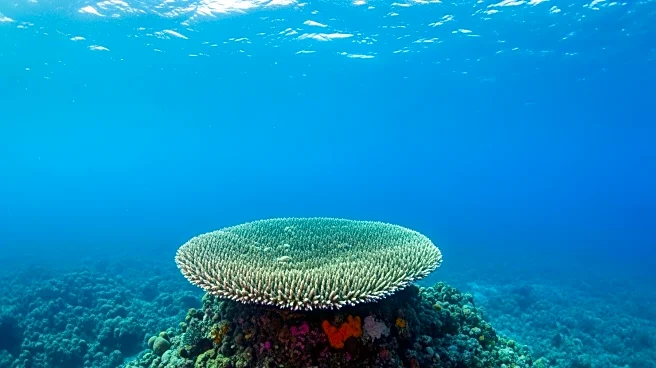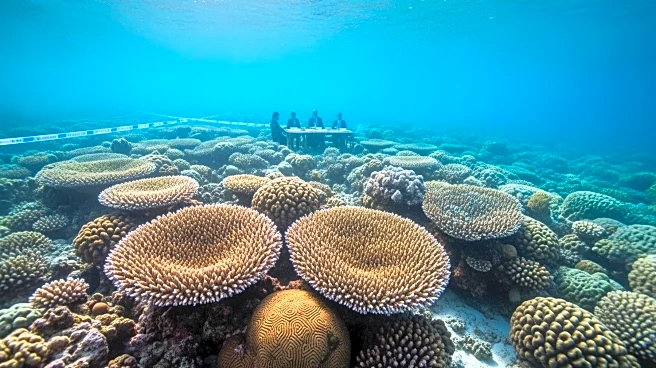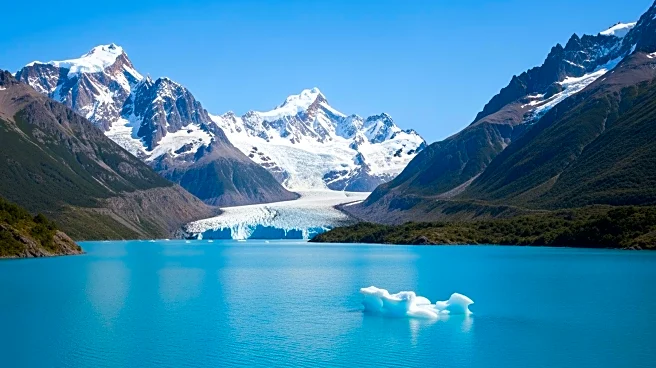What's Happening?
A recent study has highlighted the destructive impact of ship anchors and chains on the Antarctic seabed. As more vessels, including cruise ships and research boats, visit the Antarctic Peninsula and nearby
islands during the austral summer, the retreating sea ice allows them to anchor in areas previously inaccessible. The study utilized underwater video footage to document the damage caused by anchors dragging across the seabed, revealing grooves and bare patches where sediment has been scraped away. The footage also showed crushed sponge skeletons and toppled sea fans, indicating significant harm to the slow-growing marine communities that inhabit these waters. These communities, which include sponges and filter feeders, play a crucial role in sheltering fish and invertebrates and contribute to local biodiversity.
Why It's Important?
The findings of this study are significant as they underscore the long-lasting impact of anchor damage on Antarctic marine ecosystems. The slow growth rate of the organisms in these cold waters means that recovery from such damage could take decades, if not longer. This has broader implications for biodiversity and carbon storage, as these communities are vital for filtering water and storing carbon in their tissues and skeletons. The destruction of these habitats not only reduces biodiversity but also affects the local food webs, potentially impacting wildlife that relies on these ecosystems. The study calls for the adoption of alternative anchoring methods, such as dynamic positioning systems, to mitigate these impacts.
What's Next?
The study suggests several solutions to address the issue of anchor damage in Antarctic waters. These include the use of dynamic positioning systems, which allow ships to maintain their position without dropping anchors, and the installation of permanent moorings connected to floating buoys. Additionally, the establishment of 'no-anchor' zones around sensitive areas and the requirement for ships to log their anchoring locations and durations could help protect these fragile ecosystems. Implementing these measures could significantly reduce the environmental footprint of maritime activities in the region.
Beyond the Headlines
The study highlights the ethical responsibility of maritime operators to minimize their impact on vulnerable ecosystems. The destruction of habitats that have taken centuries to develop raises questions about the sustainability of current practices and the need for stricter regulations to protect these areas. The research also emphasizes the importance of balancing scientific exploration and tourism with conservation efforts, ensuring that the unique biodiversity of Antarctica is preserved for future generations.












